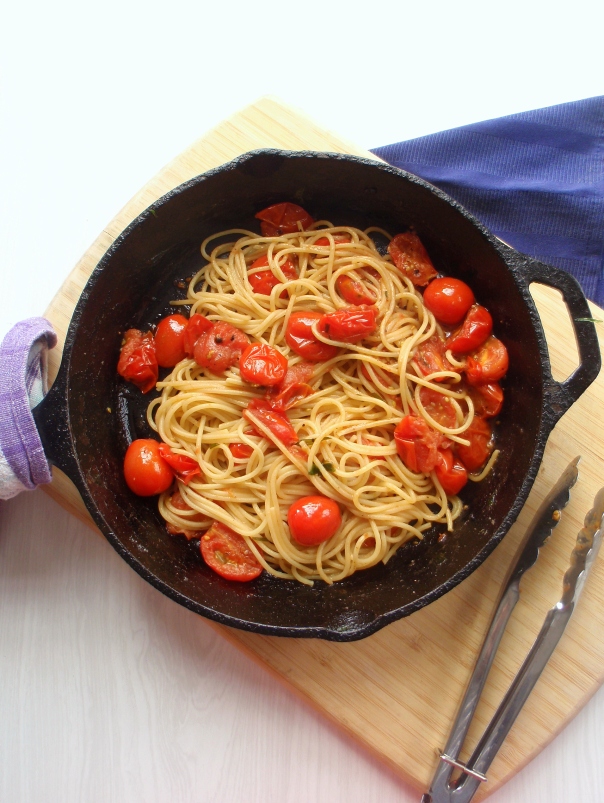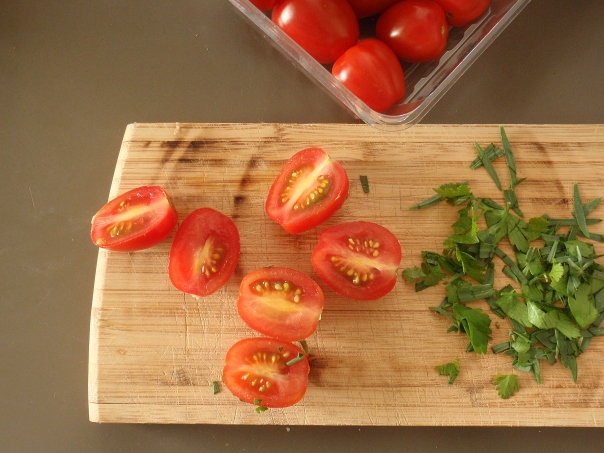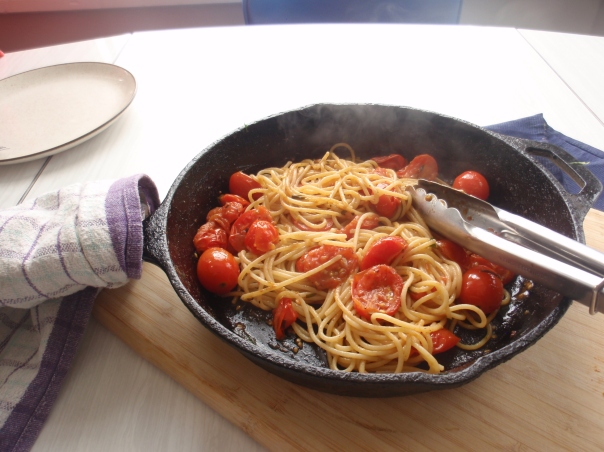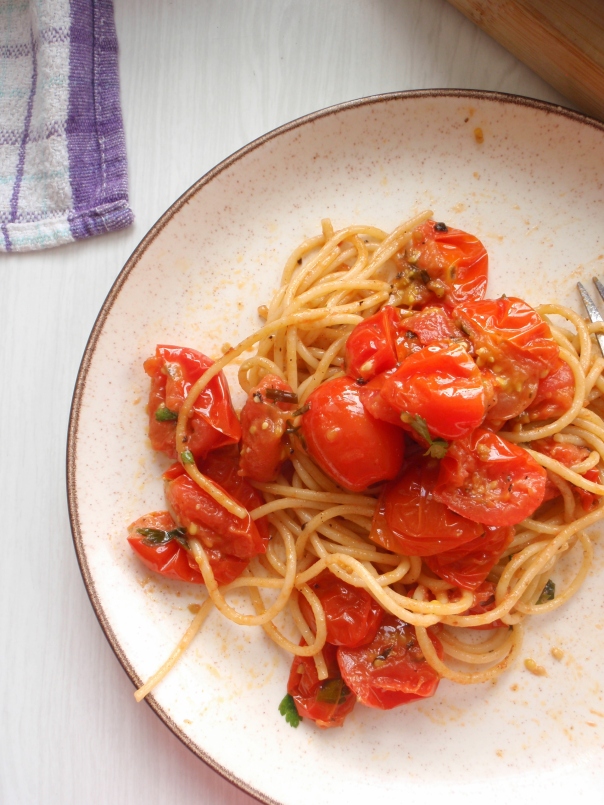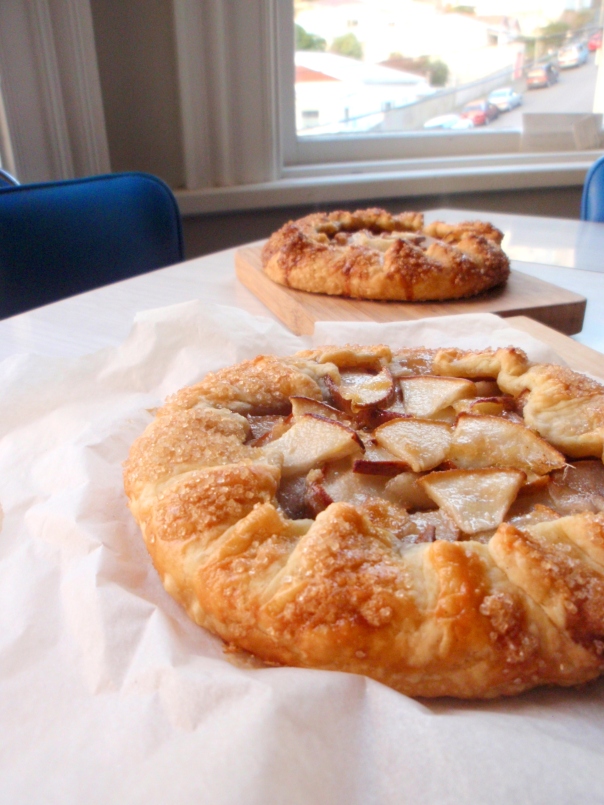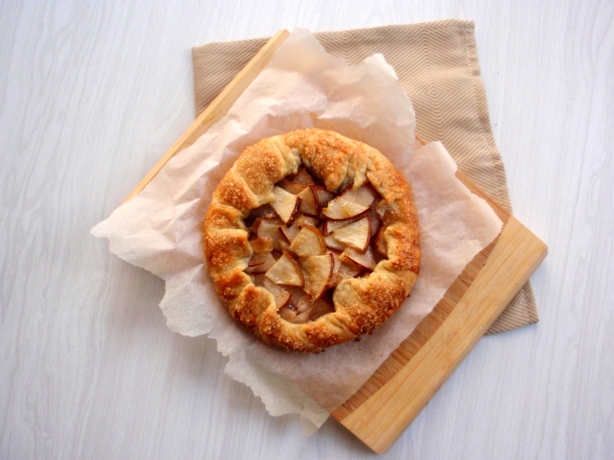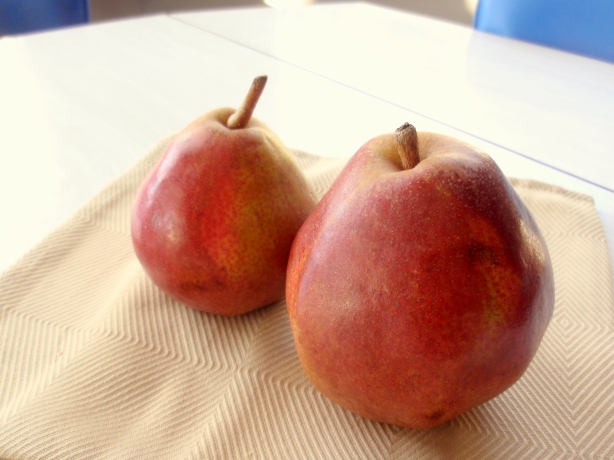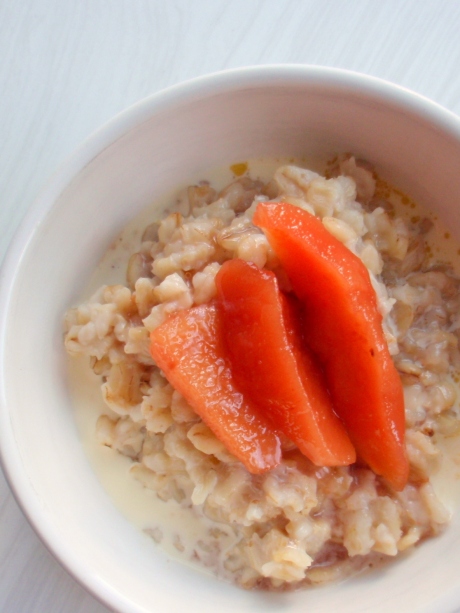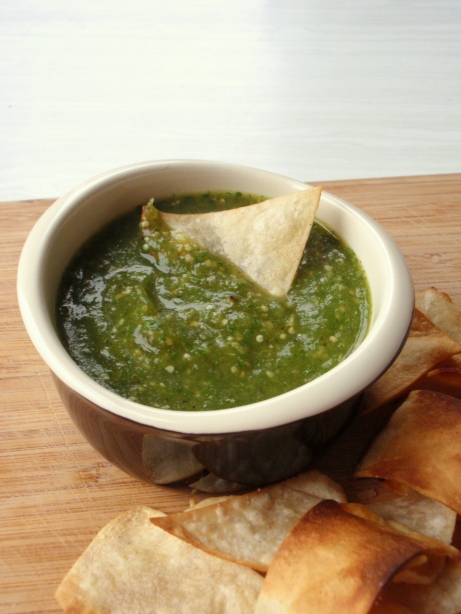I’ve taken to drinking a lot of coffee on the weekends.
This leads, predictably, to the two o’clock jitters and empty stomach panic: I want to eat anything! everything! right this instant! I start flipping through cookbooks in a haze of craving and indecision, passing over recipes that take fifteen or twenty minutes or more, because I want something now, fifteen minutes is too long, I don’t have this or that ingredient, this looks like too much work and oh I might faint I’m too hungry now. (Fifteen or twenty minutes passes in this manner.)
The lifesaver comes in the form of Nigel Slater’s really handy book Real Fast Food and a recipe in it called “tomatoes fried in butter and sugar” or something like that, which immediately appeals to me for two reasons: 1) I have all the ingredients, having just bought a punnet of cherry tomatoes at the vege market, and 2) it’s called “tomatoes fried in butter and sugar”. Oh, also it takes just two minutes to make, according to the recipe. Excellent.
The problem is, I’ve got the empty-stomach caffeine shakes and I feel like I need to eat with these tomatoes some kind of substantial carb to settle me down, and I’ve got no bread (I’m kicking myself for not buying a loaf earlier, but what can you do). I do, however, have spaghetti and with that realisation I put down the book and get to work.
Nigel’s recipe is really simple – to paraphrase: fry some tomatoes in butter and sprinkle a bit of sugar over at the end – but I feel like adding a little tarragon and parsley from the garden because I can. I add a little anchovy paste too, mostly because I’m excited about the lovely old-fashioned tube it comes in, but also to add a bit of extra oomph, because I can. I add the spaghetti to the skillet with the semi-saucy tomatoes and eat most of it out of the pan before changing my mind and transferring the rest to a plate (I really have no idea why. It tasted great either way).
My cherry tomatoes were mostly really big so I cut them in half, but if you can leave at least some of yours whole I recommend you do it: the whole ones sort of burst as you pierce them with your fork and spill their juices all over the mouthful of spaghetti you’re about to take. It’s glorious. The sugar gives it this sort of gentle sweetness reminiscent of slow-roasted tomatoes, and the softly sweet tarragon brings this out even more. And if you cook your pasta just a little past al dente then it almost becomes like a grown-ups’ version of tinned spaghetti. This is something I totally can get behind.
The best part about this meal? It was ready in the time it took to boil the jug and cook some pasta, and that’s really great when you’re shaky and hungry and must-eat-something-now. It’s super easy but I’ve posted some instructions below, for those who’d like a bit of guidance.
SPAGHETTI WITH CHERRY TOMATOES & TARRAGON
Bring a pot of water to the boil (make sure you use plenty of salt) and chuck some spaghetti in there. In a skillet or heavy-bottomed frying pan, melt two or three tablespoons butter over medium-high heat until foaming. Add some chopped tarragon (I used about a teaspoon worth but you could easily use a bit more) and about half a teaspoon (or more) anchovy paste*, fry for a few seconds, then add 250g cherry tomatoes. Cook for a couple minutes or until the spaghetti’s done. Reserve some of the pasta cooking water in case you need it to loosen up the sauce; drain pasta, add to the pan with the tomatoes, toss to coat. Add a bit of parsley before serving.
Serves 1 but can easily be doubled or tripled as needed.
*You can easily omit the anchovy paste and make this dish vegetarian, if you’re so inclined.
